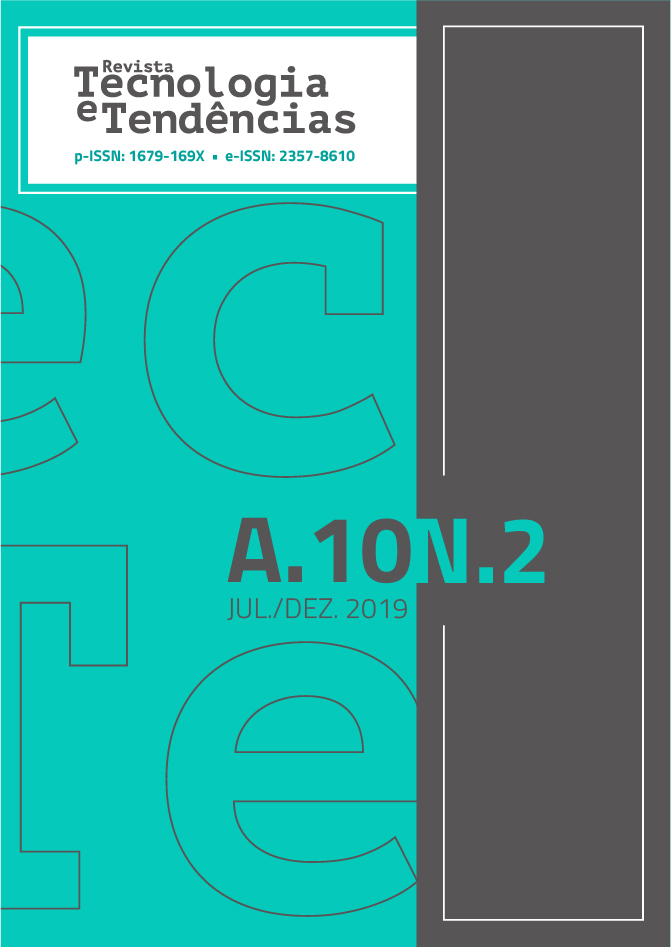ANÁLISE DE SOLDA EM ESTRUTURA METÁLICA
DOI:
https://doi.org/10.25112/rtt.v10i2.1901Resumen
O processo de soldagem em estruturas metálicas possui destaque dentro da indústria metalúrgica, pois é a melhor maneira de unir materiais com baixo custo, quando comparado a outros métodos. Diversos são os segmentos de mercado onde se faz necessário o uso de estruturas metálicas soldadas. Estruturas metálicas possuem algumas vantagens sobre os sistemas construtivos convencionais, tais como precisão, devido ao fato de os elementos serem produzidos em fábrica, possibilidade de seções menores, construções com maiores vãos e rapidez na execução da obra. A soldagem de estruturas metálicas pelo processo MIG/MAG tem se mostrado muito eficiente, sendo o método mais utilizado nas soldas de emendas dessas estruturas. O presente trabalho relata uma análise laboratorial através de metalografia da solda em questão, avaliando o seu comportamento microestrutural e sua composição química em diferentes zonas. Portanto, este trabalho tem como objetivo geral analisar a microestrutura formada em determinada parte de uma estrutura metálica soldada. Para tanto, inicialmente foi realizado o acompanhamento termográfico da estrutura durante o processo de soldagem, seguido da retirada dos corpos de prova. O processo metalográfico possibilitou análises de microscopia ótica, microscopia eletrônica de varredura e análises de EDS. Os resultados mostraram um crescimento já esperado dos grãos na região da solda e apresentaram variações em relação à composição química ao longo da área soldada.
Palavras-chave: Estruturas metálicas. Soldagem. Corrosão.
ABSTRACT
The welding process in metal structures is prominent within the metallurgical industry, as it is the best way to join materials with low cost when compared to other methods. Several are the market segments where it is necessary to use welded metal structures. Metal structures have some advantages over conventional constructional systems, such as accuracy due to the fact, that the elements are produced in the factory, smaller sections are possible, constructions with bigger spans besides the speed in the execution of the work. The welding of metallic structures by the MIG / MAG process has been proved very efficient and is the most used method for this purpose in the welds of joints of these structures. The present work reports a laboratory analysis through metallography of the weld in question, evaluating its microstructural behavior and its chemical composition in different zones. Therefore, this work has as general objective to analyze the microstructure formed in certain part of a welded metal structure. To do this, the thermographic monitoring of the structure was carried out during the welding process, followed by the removal of the samples. The metallographic process allowed the analysis of optical microscopy, scanning electron microscopy and EDS analysis. The results showed an expected growth of the grains in the region of the weld and showed variations in relation to the chemical composition along the welded area.
Keywords: Metal structures. Welding. Corrosion.
Descargas
Publicado
Número
Sección
Licencia
• Os autores mantêm os direitos autorais e concedem à revista o direito de primeira publicação com o trabalho licenciado sob a Licença Creative Commons - Attribution 4.0 International (CC BY 4.0).
• Os autores são estimulados a publicar e distribuir seu trabalho online (ex.: em repositórios institucionais ou na sua página pessoal), pois isso pode aumentar o impacto e a citação do trabalho publicado.
--------------------------------------------------------------------------------------------------------------------------------
• The authors retain the copyright and grant the magazine the right of first publication with the work licensed under the Licença Creative Commons - Attribution 4.0 International (CC BY 4.0).
• Authors are encouraged to publish and distribute their work online (eg in institutional repositories or on their personal page), as this may increase the impact and citation of the published work.

